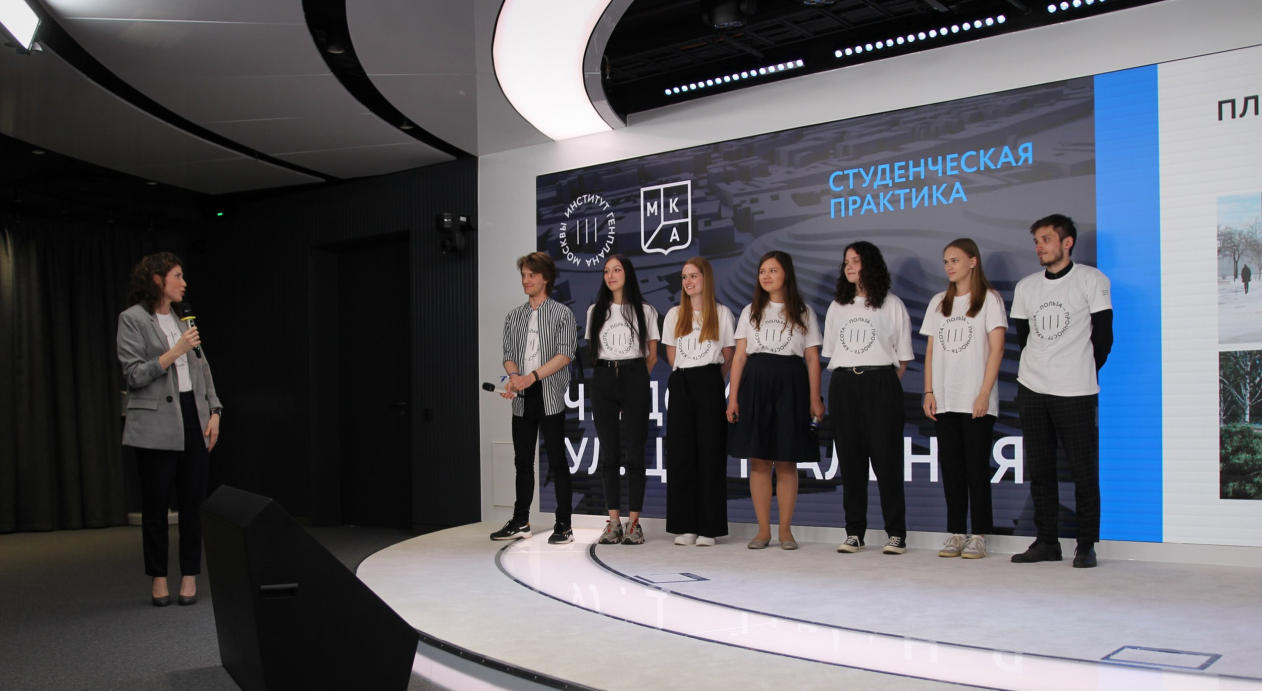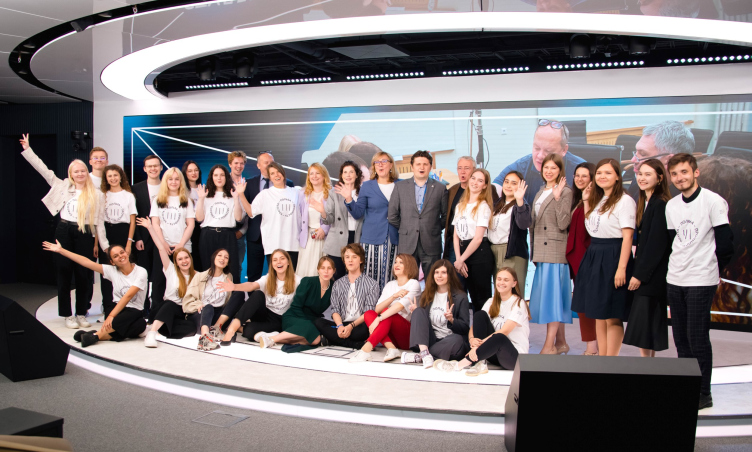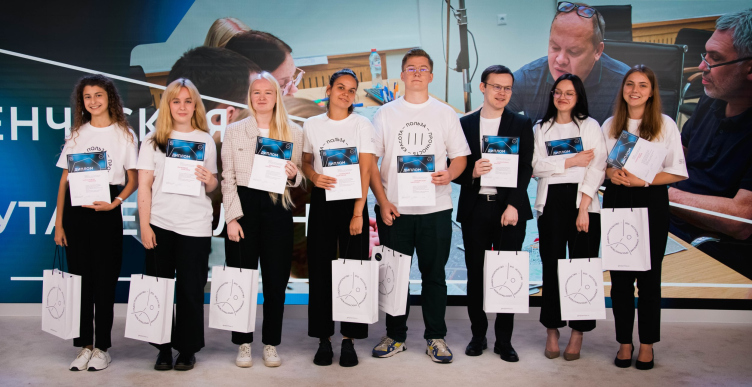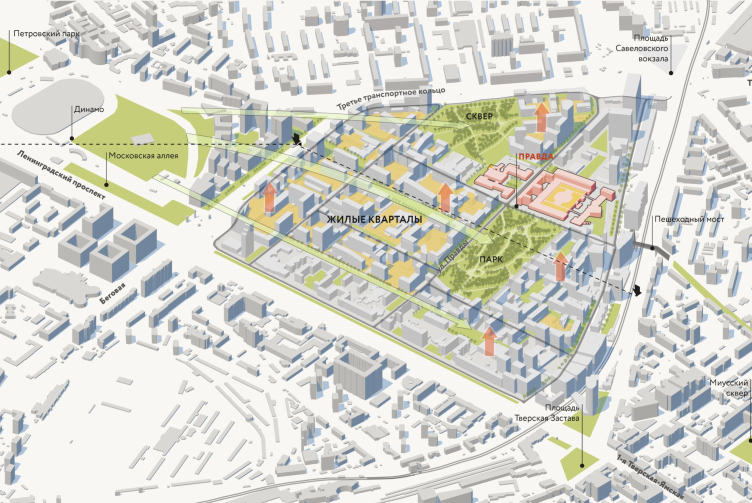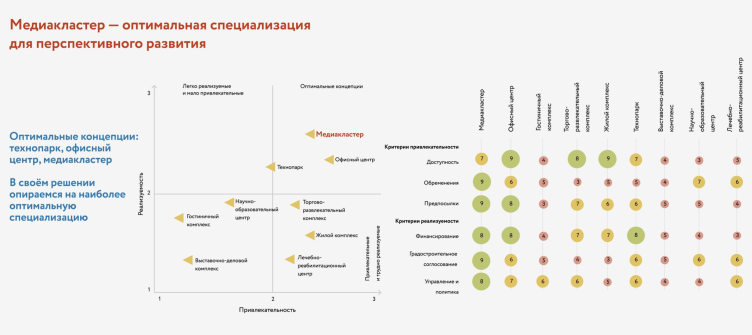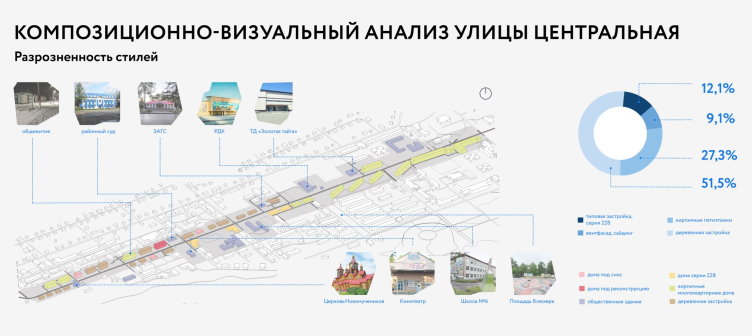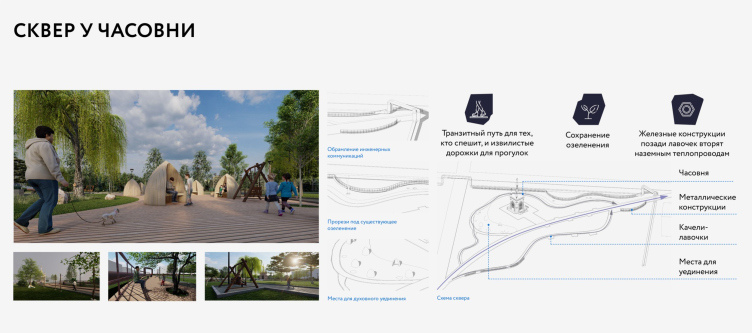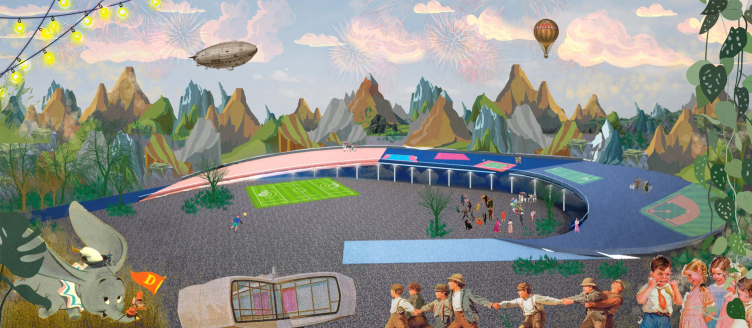We consider these summer “practices” or “internships” to be an important and very interesting part of the Institute’s activities. Student work, as you know, unlike other types of architectural practice, implies greater freedom and courage, as well as relaxation of all participants – accordingly, the practices help us to look at seemingly familiar tasks from a new angle, and to recharge our batteries in many respects. This year I curated one of the workshops for the first time, so I followed both the work and the presentations with great interest.
And I have to say that – although I certainly see some mistakes, weaknesses, inaccuracies, etc. – I think it is much more important that the level of work is increasing, sometimes it is amazing how students manage to do such thorough research in a short period of 1.5-2 months. Of course, we use internships to recruit future employees – some internship participants, as was done in previous years, will receive invitations for additional internships or jobs.
And I have to say that – although I certainly see some mistakes, weaknesses, inaccuracies, etc. – I think it is much more important that the level of work is increasing, sometimes it is amazing how students manage to do such thorough research in a short period of 1.5-2 months. Of course, we use internships to recruit future employees – some internship participants, as was done in previous years, will receive invitations for additional internships or jobs.
Participants, tutors and jury. Practice of the Institute of General Plan / 2023
Copyright: Photograph © Vladimir Kudryavtsev / provided by Genplan Institute of Moscow
Practice of Genplan Institute of Moscow / 2023. Chegdomyn project team
Copyright: Photograph © Vladimir Kudryavtsev / provided by Genplan Institute of Moscow
Video report on the presentation of students’ works.
The first two projects were done by big teams, and they are characterized by a high degree of detailing of town planning solutions.
The project developed for the Pravda complex was awarded the grand prize by the judging panel.
Grand Prize
New Pravda: a media cluster for bloggers
Curators: Tatiana Guk, Director of the Genplan Institute of Moscow, Dmitry Nekrasov, Advisor to the Director of the Genplan Institute of Moscow.
Participants: Anastasia Dzhumiga, Kristina Yakovleva, Anastasia Smirnova, Emil Halliullin, Arina Andreeva, Nikolay Samofalov, Arina Demyanova, Marina Chursanova
Team of the PRAVDA project. Practice of Genplan Institute of Moscow / 2023.
Copyright: Photograph © Vladimir Kudryavtsev / provided by Genplan Institute of Moscow
Concept of the local urban space PRAVDA
Copyright: Practice of the Genplan Institute of Moscow / 2023
The Pravda newspaper factory, built according to the project of Ilya Golosov, which opened in 1934, and in 1988 received the status of a cultural heritage site (this status, by the way, as a consequence, implies only restoration of the buildings), is now in a state of semi-abandonment and inefficient rent. The Yamskoye Pole district is not used very efficiently by Moscow in general, as the project team calculated: there are 12 times fewer organizations here than in other districts within the Third Transport Ring. Pravda used to be the largest publishing house in the world, which, of course, was due to the Soviet passion for building big things, but still, the fact that back in the day it produced about 11 million copies of printed matter a year is as impressive as an Egyptian pyramid.
In 2006, the buildings of the complex burned down, and the issue of its revitalization was subsequently approached more than once, but no project was ever implemented. In the summer of 2022, DOM.rf put it up for sale; there is a great chance, as was heard at the event, that the territory will soon be covered by the “comprehensive development of cities and districts” program.
The team members analyzed the lists of organizations “inhabiting” Yamskoye Pole now and concluded that among them there is a very high percentage of media entities: editorial offices, publishing houses, and the like – they qualified it as a fading trace of the influence of the Soviet publishing complex, and even characterized the Pravda district as a “protocluster”.
The authors of the project suggested turning the complex into a media cluster specializing in bloggers as the most productive and promising area of the media sphere of our time: their rates are lower, their audience is larger, and they grow faster. According to research data, there are 1.4 million bloggers in the country now, 60% of them based in Moscow, so cafes, co-working spaces, recording studios, creative offices and exhibition spaces could appear here for them.
Concept of the local urban space PRAVDA
Copyright: Practice of the Genplan Institute of Moscow / 2023
“Camp Fest” campus.
Copyright: Practice of the Genplan Institute of Moscow / 2023
Concept of the local urban space PRAVDA
Copyright: Practice of the Genplan Institute of Moscow / 2023
According to the project, the main traffic load should be channeled from Pravda Street to Yamskogo Polya Street; a pedestrian bridge should be built over the Butyrsky Val and over the railroad (it seems that it is in the city’s plans and is even under construction now). The industrial areas of the Dux Rocket Plant and the Rumyantsev Machine Building Plant should be turned into parks that will be in demand both by creative media bloggers and by the residents of the neighboring houses and offices being built in the Yamskoye Pole area according to the designs of CLP, Dyar, Evgeny Gerasimov and others.
According to the team’s calculations, the project has a chance to pay off in 3 years, its implementation could be started in 2023, completed in 2030, and in 2034 the 100th anniversary of the complex could be celebrated in the new media cluster.
Practice participants
Chegdomyn, Tsentralnaya Street
Concept for the development of Tsentralnaya Street in the town of Chegdomyn
Curators: Tatiana Terekhova, Head of Urban Development Workshop, Arseniy Igoshev, Junior Specialist of APM No.2.
Participants: Daria Igoshina, Georgy Haiduk, Inna Sergeeva, Angelina Indereva, Sofia Makarova, Alexandra Petrova, Timofey Maiko, Anastasia Murzaeva
The team of Chegdomyn project. Practice of Genplan Institute of Moscow / 2023.
Copyright: Photograph © Vladimir Kudryavtsev / provided by Genplan Institute of Moscow
Chegdomyn, the Central Street
Copyright: Practice of the Genplan Institute of Moscow / 2023
Yet another detailed project with a large team from different time zones was developed at the request by Alexey Krupevsky, the first deputy head of the Verkhnebureinsky district; it is one of the useful echoes of the competition that the Genplan Institute of Moscow was engaged in 2022-2023 – and in many ways it represents a different pole as compared to the territory of the capital’s monument of architecture, i.e. the Pravda complex.
The town of Chegdomyn specializes in coal mining and processing, its population is 11,000 people, and it is located between Blagoveshchensk and Khabarovsk; it takes 12 to 18 hours to get to the nearest city by car, 17 hours by train, airfields are only open in winter, so going somewhere for fun is not an trivial task here. However, in this city they shoot a serial named “The Gold of Umalta”. One of the main advantages of the city, noted by the authors of the project, is that although it is located on a plain, it is surrounded by beautiful landscapes of forest-covered mountains.
The subject of the design is the improvement of Tsentralnaya (Central) Street, the linear center of the town, where most of its public infrastructure is concentrated, including its social sector, although it has few residents and, therefore, the functions will be located far from pedestrian accessibility.
Chegdomyn project team. Practice of the Institute of General Plan / 2023.
Copyright: Photograph © Vladimir Kudryavtsev / provided by Genplan Institute of Moscow
However, the project is not so much about a master plan, as it is about landscaping, and the architects proposed to rethink 8 public spaces of various kinds, “strung” on the axis of the street: squares in front of the cinema and registry office, a playground and a sightseeing platform, a public garden, a boulevard and even parking garages. They propose to narrow the main – Central – street from 5 meters to 3.5 meters, and to use the resulting space for snow storage (there is a lot of snow there), as well as to make a storm drainage system, which does not exist yet – after its appearance, the tarmac coverage will be preserved longer than now.
The team not only worked at the request of the village administration, but was in constant contact with it, collecting information and its additional wishes, so that the “presence effect”at the presentation of the project definitely appeared, especially since the young architect organized part of the story about the project in the format of a tour of the city, or rather, a tour of the spaces that they proposed to create in it. However, if the study and schemes should be recognized as detailed and thorough, I would suggest the young architects work more on the architecture of the proposed objects – so far only the “onion” gazebos in the square near the chapel seem truly interesting from a purely architectural standpoint.
Chegdomyn, the Central Street
Copyright: Practice of the Genplan Institute of Moscow / 2023
A “new-generation” young pioneer camp
The next three works were made under the guidance of curator Irina Lobanova, and according to a slightly different principle: instead of gathering a large team of participants around one story, they were divided into three groups and each group proposed its own solution for the same territory – the former pioneer camp “Gornoe Echo” in the Alikonovsky Gorge of the Stavropol Territory, near Kislovodsk.
The territory is part of the tourist route “The Path of Narzan”, a tourist trail runs along it. The camp straddles the two banks of the Akonovka River, the height difference on the planning site itself is 5 meters, and on the sides – up to 40 meters.
The task was to propose the concept of an educational hub for gifted schoolchildren, similar to Sirius. The camp is designed for 24 days of stay for schoolchildren of 7-11 grades.
Festival and party type: FEST
Participants: Rufina Galikieva, Alina Shultz, Sofia Ryabinina, Daria Karpunina
“Camp Fest” campus.
Copyright: Practice of the Genplan Institute of Moscow / 2023
My favorite (the wildest), project of the three: according to the architects’ self-title, “a place of legalized vandalism, a center of education in modern art, sports and science”. The project essentially consists of “fashionable” funny collages, the emphasis being not so much on architecture and planning as on the program and the idea of “triggering” creativity through a special festival atmosphere. The reality of this idea is immediately questionable, but the very possibility of this kind of fantasy is somehow inspiring in itself.
Spatial type: MOST (“THE BRIDGE”)
Participants: Maria Chernikova, Kira Chamurlieva
The project is no less daring, but more in architectural and spatial terms: the young architects proposed to divide the two banks of the gorge into children and adults areas, and to connect them by a “bridge”, this bridge being the school building itself.
An “Inhabited Bridge” is a thing known to be a favorite of many and therefore almost a sure-fire thing as a subject for the project. The architects proposed three variants of the building, consistently working off the agenda of metaphysical classics, neo- and simple modernism. One bridge turned out to be in the form of a Roman aqueduct, which, however, for some reason was called “romantic Gothic”; another with unmotivated non-linear curves in the form of mountains; and the third was straight.
The building is three stories high; in the middle part, classrooms are located above the river; on the sides, where the bridge rests on the ground, communication centers and large halls are grouped together: dining room, stage, library.
This is all great and fine, and the solution looks enticingly simple, but I am still haunted by the question: how are the children going to get by on their bank without the adults? Of course, you can install surveillance cameras, but that sort of kills the very idea…
Consecutive type: trail
Participants: Daria Karpunina, Sofia Ryabinina, Alina Shultz, Rufina Galikieva
The authors were inspired by the idea of a pilgrimage trail – primarily Santiago de Compostela – and the effect it can have on personal growth, including for non-religious people, and treated their version of an educational hub as a trail.
This project features the most elaborate study of the surrounding urban situation, from transportation to the nearby monuments.
On the downside, however, the idea of the “trail” itself seems underdeveloped: the students, according to the proposed concept, will hike only at the end of their stay. But the very desire to immerse the hub in the peculiarities of the place, using an existing tourist route, deserves some credit, as does the beautiful collage graphics, which, however, is now becoming pretty commonplace.
***
So, if we look at the projects, we can see the reality of the sites and tasks: both the improvement of the Central Street in Chegdomyn and the former pioneer camp “Gornoe Echo” already have an interested client, so the ideas, although pretty raw in some places, but fresh and bold, will probably not go to waste, but at least will be added to the collection of local studies. During the discussion of the projects, it was even mentioned that Central Street could well be included in the Small Towns competition – and why not? It will be interesting to follow the subsequent development of each site: whether the ideas will be useful or not.
All the participants were quite deservedly praised – after all, for many of them it was their first works of varying degrees of urbanism. On the other hand, it would be interesting not only to praise, but also to hear a professional critical analysis of the works from the position of an urban planner. Presentations of projects are becoming more and more beautiful and lengthy and convincing – all the more curious to find out what failed in each of them, and what, for example, is unrealizable. Maybe the next step in the development of practices will be such a parsing? Not brutal, just objective.
On August 28, the projects were evaluated by the jury:
Sergey Glubokin, MCA;
Anna Ivanova, Genplan Institute of Moscow;
Maxim Perov, Genplan Institute of Moscow;
Grigory Mustafin, Genplan Institute of Moscow;
Julia Tarabarina, Archi.ru

